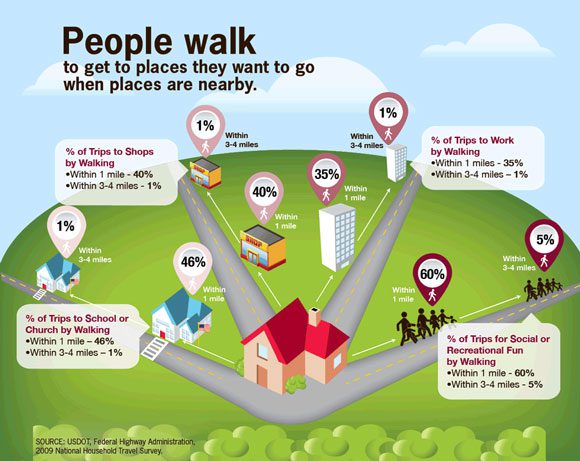While May is officially designated as National Walking Month, taking a walk on any given day in any week and month of the year is the key to maintaining good health as we age. In fact, the more we walk, the better our chances are of improved mobility, adequate cardiovascular exercise, and reaching and staying at a healthy weight.
What’s more, walking’s many benefits also include lowering the risk of heart disease, stroke, and diabetes. A walking workout helps promote balance and coordination, strengthens bones, and can prevent osteoporosis and osteoarthritis. Some sources posit that regular walking may even halve the number of people over age 45 who suffer a hip fracture. If you use a cane or walker, building up to as many minutes a day of walking as possible may take a little more time. However, health professionals believe it’s an achievable goal with results that are known to improve quality of life and even extend one’s lifetime.
 Social Benefits Go Hand-in-Hand with Walking Benefits
Social Benefits Go Hand-in-Hand with Walking Benefits
When Mary Connelly’s husband of 45 years passed away, understandably dark days followed. On the advice of her health provider, little by little she began to walk, soon discovering that movement and fresh air lifted her spirits, increased her energy levels, and helped her build stamina. From a social standpoint, she met people along her route with whom she eventually made regular walking dates, expanding her circle of friends and acquaintances at a time when supportive relationships were needed the most.
Gearing Up for Walking
Remember the old days of simply donning a pair of PF Flyers and hightailing it down the block? Ask any athlete today, however, and s/he will tell you the right equipment makes for the right results. With that, among the many virtues of walking is that extensive, costly equipment is unnecessary, though properly fitting footwear will definitely help prevent soreness and injuries. Many athletic shoe manufacturers make walking shoes designed to cushion the foot and absorb impact, with contours and padding at strategic points, and perhaps roomier toe boxes. But for most people, a pair of sneakers in good condition will do the trick, whether or not they are specifically designed for walking.
Where to Walk
Partial to fresh air, nature, and wide-open spaces? Many walkers report they opt to exercise in and around open fields, lakes, on trails, along beaches, etc. As you improve, incorporating areas where you can walk uphill can give your workout that extra push, taking it to the next level for an optimal cardio workout.
If you live in the city or suburbs, walking right in your own neighborhood can do double duty: serving as exercise and giving you a chance to wave hello to neighbors you may see along the way (just be sure to keep moving to keep your heartrate up for optimal results!). If you live near a high school or college with an outdoor track, many institutions allow area residents to use the property at off-hours. And in inclement weather, ubiquitous mall walkers are often seen at many indoor malls, rendering rain, snow, ice, or perhaps the occasional heatwave inadequate excuses for not participating in a daily healthy exercise regimen. If you can’t make it to the mall, walking on a treadmill is a good option to get your daily exercise.
Begin at the Beginning
As with any exercise program, consulting your health provider first is always best. Walking can be a less strenuous form of exercise tailored to almost anyone’s ability, even if you have not exercised in years. Goals can be adjusted as confidence, strength, and stamina levels increase. A Harvard Health editorial stated at least 150 minutes per week of walking or other moderate intensity exercise will yield the best results, and exercising for just 10 minutes a day to begin with can set you on the path to achieving that goal. For seniors with ambulatory issues, having a trained caregiver at your side can provide the support needed for maintaining mobility.
Solo or with a spouse or friend, the benefits of walking are almost immeasurable. Except for a sturdy pair of shoes, no fancy, expensive equipment is needed and embarking on an exercise regimen like this is as easy as walking out your front door.
“Seniors Who Walk Enjoy Health Benefits at Any Pace,” written by Beth Herman, Amada blog contributor.



